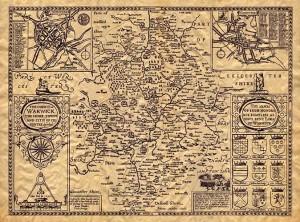 Maps have become more than just a navigator’s tool that will help him get from Point A to Point B with the least hassles and in the shortest way possible. Today, maps, particularly old ones, are collected not only for their value and historical significance but also as works of art. Framed antique maps make spectacular wall decorations that enhances the home or workplace.
Maps have become more than just a navigator’s tool that will help him get from Point A to Point B with the least hassles and in the shortest way possible. Today, maps, particularly old ones, are collected not only for their value and historical significance but also as works of art. Framed antique maps make spectacular wall decorations that enhances the home or workplace.
Maps are considered antiques when they were printed or drawn at least 100 years ago. Their price tags depend on a variety of factors including condition, demand, and rarity. An old map that was rarely used and kept in pristine condition may cost more than those with tears, stains, discoloration and creases but some collectors prefer these worn-out maps because they have more character and history in them.
Being made from paper and at least a hundred years old, antique maps are fragile items that require utmost care during handling. When shipping antique maps, proper packing must be observed to ensure that it will not incur any damage during transit. Here are some tips on how to properly pack and ship antique maps to ensure that they arrive safely and in excellent condition.
Depending on its size, a map can be shipped either flat or rolled and encased in shipping tubes. Smaller ones can be packed flat by inserting it between two pieces of sturdy corrugated cardboard stock cut to the size of the map. Secure the cardboard in place using tape on the sides. Make sure that the tape adhesive only touches the cardboard surface and will not in any way get in contact with the antique map. Insert the boarded map inside a padded envelope and seal all seams with tape.
For framed maps, place corner protectors on each corner of the frame. You can make these from pieces of corrugated cardboard or you can purchase the plastic variety from moving supplies stores. Corner protectors will cushion your framed map while in a shipping box and also prevent damage to the corners of the frame.
Wrap the frame in bubble wrap and secure with tape to prevent it from unraveling. Place the wrapped frame in an appropriately sized picture box. Fill any extra spaces on the side, top and bottom of the box with crumpled newspaper to prevent the frame from moving and keep it in the center of the package. Close the box and tape it shut. Address and label the box.
When shipping large antique maps, the best way to pack it is to roll and place it inside a shipping tube. This way, the map is well protected and avoids any damage such as folds, creases and tears during transit. Carefully roll your antique map and take its measurement (length and diameter). Use the dimension to purchase a proper-sized mailing tube with some extra room at the ends.
Place the rolled map inside the mailing tube. Never use rubber bands or tape to secure the roll to prevent unfurling. Just keep on holding the roll until the entire map is inside the tube. Place some bubble wrap at both ends of the tube to prevent the map from shifting. Place the plastic caps on both ends and tape them down securely at the edge of the tube. Make sure that the caps will not pop out during transit. Write or attach the address on the middle of the tube and take to the post office or shipping company.
High value items like an antique map should be shipped fully insured for the purchase price of the item to cover expenses in case the package gets damaged or lost during transit.
